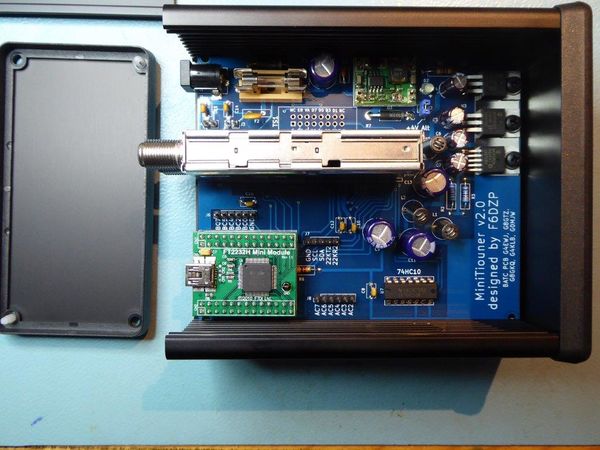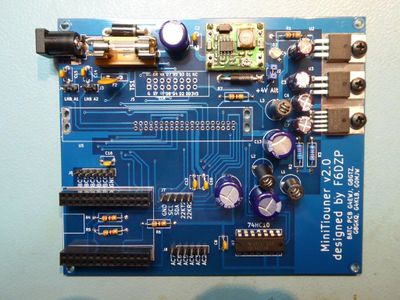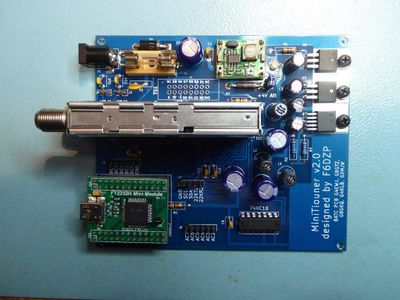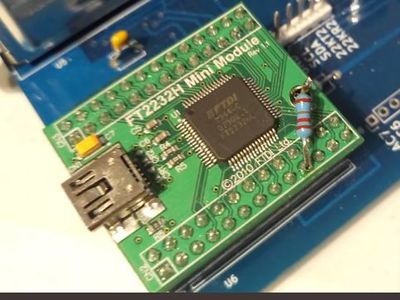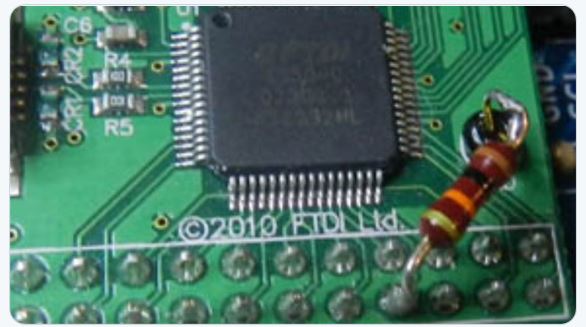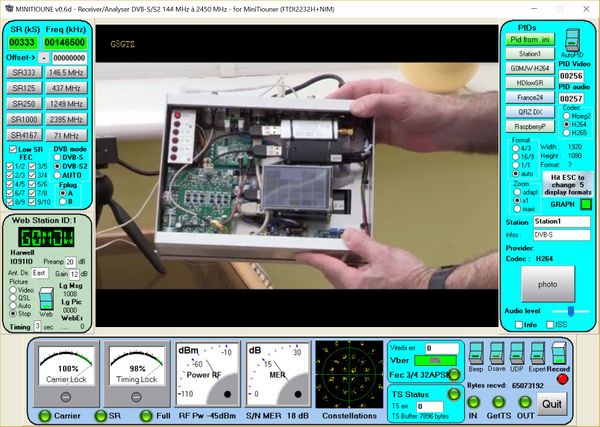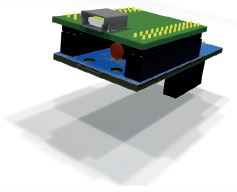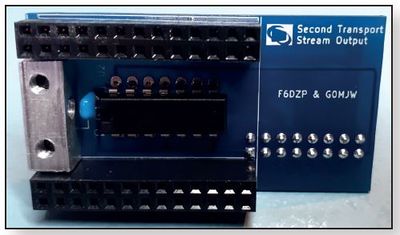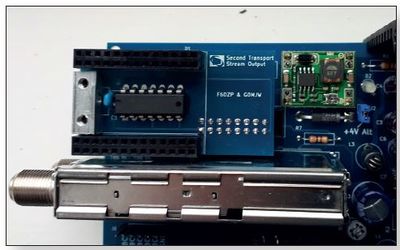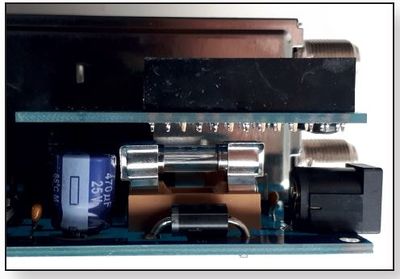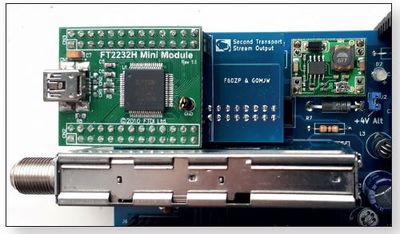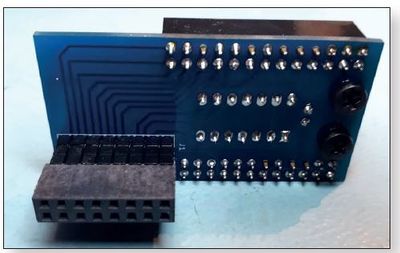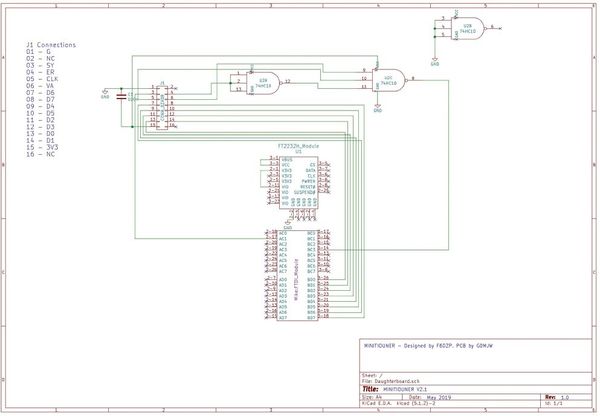Difference between revisions of "MiniTiouner hardware Version 2"
| (17 intermediate revisions by one other user not shown) | |||
| Line 1: | Line 1: | ||
The Minitiouner hardware is designed for easy home construction, uses only leaded components and consists of the 3 main components. | The Minitiouner hardware is designed for easy home construction, uses only leaded components and consists of the 3 main components. | ||
| − | To build the unit you only need to buy the following components from the BATC shop [https://batc.org.uk/category/usb-receivers/] | + | To build the unit you only need to buy the following components from the BATC shop [https://batc.org.uk/category/usb-receivers/]. |
*The ready programmed USB interface. | *The ready programmed USB interface. | ||
| Line 7: | Line 7: | ||
*The version 2 main PCB. | *The version 2 main PCB. | ||
| − | *The Serit tuner or NIM covering 143 - 2450 MHz. | + | *The Serit 4334 tuner or NIM covering 143 - 2450 MHz. |
*The unit uses an adjustable MCP1826 as the 1V regulator, which can be hard to find. | *The unit uses an adjustable MCP1826 as the 1V regulator, which can be hard to find. | ||
| Line 19: | Line 19: | ||
The PCB has been developed to fit snuggly inside a Hammond 1455 series 103x120x53mm enclosure and uses standard leaded components so no specialist techniques needed. | The PCB has been developed to fit snuggly inside a Hammond 1455 series 103x120x53mm enclosure and uses standard leaded components so no specialist techniques needed. | ||
| + | |||
| + | Mike, G0MJW, has written an excellent guide on building and testing the board - download them here [[:Media:Notes on building the BATC v2 Minitiouner.pdf|Notes on building the BATC v2 Minitiouner]]. This pdf includes a Panel layout for the Hammond Box. The height of the USB connector depends on the header used, but if the one in the BOM is selected, the bottom of the connector will be ~19mm from the bottom of the panel. | ||
[[File:Serit2.jpg|400px]] | [[File:Serit2.jpg|400px]] | ||
| Line 26: | Line 28: | ||
The parts list and schematic are available for download here: | The parts list and schematic are available for download here: | ||
| − | * [[: | + | * [[:media:SERIF.pdf| Circuit diagram / schematic]] |
| − | * [[: | + | * [[:media:Seritpartsv3.xls| Parts list]] |
Note the 22uF electrolytic capacitors on the regulators are low ESR types chosen to minimise oscillation - substitute at your peril! Ceramics can be used instead but through hole 22uF ceramics are expensive. | Note the 22uF electrolytic capacitors on the regulators are low ESR types chosen to minimise oscillation - substitute at your peril! Ceramics can be used instead but through hole 22uF ceramics are expensive. | ||
| Line 33: | Line 35: | ||
The small regulator module is used to reduce the 12V input down to 5V to reduce power dissipation in the linear regulators. The recommended type is available from ebay - search for "MP1584 step down buck regulator". | The small regulator module is used to reduce the 12V input down to 5V to reduce power dissipation in the linear regulators. The recommended type is available from ebay - search for "MP1584 step down buck regulator". | ||
| − | The blank PCB, tuner, USB module and 1 volt regulator are available from [https://batc.org.uk/ | + | The blank PCB, tuner, USB module and 1 volt regulator are available from [https://batc.org.uk/category/usb-receivers/ the BATC shop] |
[[File:Serit complete.jpg|400px]] | [[File:Serit complete.jpg|400px]] | ||
| − | |||
| − | |||
===Setting up the hardware=== | ===Setting up the hardware=== | ||
| Line 69: | Line 69: | ||
===Testing and using the MiniTiouner for the first time=== | ===Testing and using the MiniTiouner for the first time=== | ||
| − | Once you are satisfied the voltage levels are correct and there is no smoke, you need to | + | Once you are satisfied the voltage levels are correct and there is no smoke, you need to connect your hardware up to a [[Ryde Introduction|Raspberry Pi4 Ryde receiver]] or a PC running the MiniTioune software. |
| − | Full details including how to set up the software, drivers and decoders is on the [[MiniTioune software|MiniTioune software page]]. | + | Full details including how to set up the MiniTiouner software, drivers and decoders is on the [[MiniTioune software|MiniTioune software page]]. |
===On the air=== | ===On the air=== | ||
| Line 81: | Line 81: | ||
==Serit LNB DC supply problems == | ==Serit LNB DC supply problems == | ||
| − | A number of people on the BATC forum have reported their Serit tuners are no longer outputting the LNB voltage from one of the F sockets. The cause is inevitably an open circuit inductor (L101 or L102) after the output has been | + | A number of people on the BATC forum have reported their Serit tuners are no longer outputting the LNB voltage from one of the F sockets. The cause is inevitably an open circuit inductor (L101 or L102) after the output has been accidentally short-circuited. |
This wiki page has more details of how to repair a broken tuner and details of an add on PCB with a DC current limited supply. | This wiki page has more details of how to repair a broken tuner and details of an add on PCB with a DC current limited supply. | ||
[[Serit LNB DC supply]] | [[Serit LNB DC supply]] | ||
| + | |||
| + | ==Dual channel output for the Minitiouner hardware== | ||
| + | ===Hardware=== | ||
| + | |||
| + | It has always been known that the Serit 4473 NIM used in MiniTiouner has a dual tuner capability and is capable of tuning to and outputting two separate channels. When the version 2 MiniTiouner PCB was designed by Mike G0MJW and Jean-Pierre F6DZP they included a 2nd transport stream output on a separate socket next door to the tuner module. | ||
| + | |||
| + | [[File:M21.JPG|400px]] | ||
| + | |||
| + | Because when the unit is used for terrestrial contacts there is no need for a 2nd channel, the USB interface board needed to use the 2nd channel was never developed. However, with the launch of Oscar100, there are often 2 or more separate signals on the wideband transponder. As a result of this potential application, Mike G0MJW has now developed a small daughter board that hosts a 2nd USB module and 74HC-10 chip and plugs into the main MiniTiouner board providing a second USB output whilst still fitting inside the standard Hammond case. | ||
| + | |||
| + | [[File:M23.JPG|400px]] | ||
| + | |||
| + | The new daughter board sits on top of a standard header fitted to the empty socket next door to the Serit NIM. | ||
| + | |||
| + | [[File:M24.JPG|400px]] | ||
| + | |||
| + | [[File:M25.JPG|400px]][[File:M26.JPG|400px]] | ||
| + | |||
| + | [[File:M27.JPG|400px]][[File:M28.JPG|400px]] | ||
| + | |||
| + | ===Schematic=== | ||
| + | |||
| + | The circuit is identical to the main MiniTiouner PCB. PCBs are available from the BATC shop. | ||
| + | |||
| + | [[File:M22.JPG|600px]] | ||
| + | |||
| + | Two new holes need to be drilled in the front panel, one for USB and one for support. A simple bracket needs to be fabricated to manage the USB plugging forces. | ||
| + | |||
| + | ===Software=== | ||
| + | |||
| + | Tom ZS6RTG is currently developing a dual-channel version of opentuner. | ||
Latest revision as of 09:37, 31 August 2025
The Minitiouner hardware is designed for easy home construction, uses only leaded components and consists of the 3 main components.
To build the unit you only need to buy the following components from the BATC shop [1].
- The ready programmed USB interface.
- The version 2 main PCB.
- The Serit 4334 tuner or NIM covering 143 - 2450 MHz.
- The unit uses an adjustable MCP1826 as the 1V regulator, which can be hard to find.
All other components such as Rs, Cs and 5V buck regulator are available from normal suppliers - see the parts list further down this page.
Building the Version 2 MiniTiouner PCB
The PCB has been developed to fit snuggly inside a Hammond 1455 series 103x120x53mm enclosure and uses standard leaded components so no specialist techniques needed.
Mike, G0MJW, has written an excellent guide on building and testing the board - download them here Notes on building the BATC v2 Minitiouner. This pdf includes a Panel layout for the Hammond Box. The height of the USB connector depends on the header used, but if the one in the BOM is selected, the bottom of the connector will be ~19mm from the bottom of the panel.
Parts list and schematic
The parts list and schematic are available for download here:
Note the 22uF electrolytic capacitors on the regulators are low ESR types chosen to minimise oscillation - substitute at your peril! Ceramics can be used instead but through hole 22uF ceramics are expensive.
The small regulator module is used to reduce the 12V input down to 5V to reduce power dissipation in the linear regulators. The recommended type is available from ebay - search for "MP1584 step down buck regulator".
The blank PCB, tuner, USB module and 1 volt regulator are available from the BATC shop
Setting up the hardware
The design uses a MP1584 buck converter step down module to reduce the input, which can be in the range 6-20V down to 4V. Using a switching converter significantly reduces the generated heat. Optionally a 3.7-5.5V supply can be used instead, bypassing the converter Three low drop out linear voltage regulators are used to regulate the digital 3.3V and 1.2V and analogue 3.3V supply rails. Linear regulators and extensive filtering are used to ensure low noise for maximum RF performance.
There is not much to set up but before connecting the DC-DC converter to the input of the linear regulators, the output MUST be set to 3.7-4V output. This is because these LDO regulators can only handle a maximum of 6V input. There is a Zener to provide some protection but damage is still possible and worst case you could end up with whatever is on the input appearing at the output - i.e. 5.6V on the 3.3V and 1.2V rails.
There are two options, one is to set the correct converter voltage before its installed on the PCB. The other is to remember not to fit the jumper JP2, ALT 4V that connects it to the regulators and set it up in commissioning.
We recommend that you build and then test all the voltage rails BEFORE fitting the NIM. This is easy as you can probe the top of the RFCs to measure them.
If you don't use the DC-DC converter and run directly off an external 5V (DO NOT connect a higher voltage) supply to JP2, you may need to heatsink the regulators. With the DC-DC converter, the copper area on the board seems to be adequate as a heatsink.
Do not allow too much strain to be exerted on the USB socket - at least one has been known to dislodge during use.
MiniTiouner version 0.8+ software
A small modification must be carried out before this version 2 hardware can be used with the MiniTiouner version 0.8 (Spring 2018) or any later versions.
A resistor between 5.6k and 12k must be fitted between CN2 Pin 19 on the USB module (U6 on the BATC PCB) and ground as shown in the pictures by G7JTT and M1EGI.
Programming the FT2232 USB module
All USB modules sold by the BATC shop are ready programmed and you do NOT need to reprogram it..
If you obtained your module from elsewhere or you need to reprogram it it follow the instructions here http://www.vivadatv.org/viewtopic.php?f=80&t=379 The template xml file for the MiniTiouner is available as a zipped file for download here.File:NIM tuner.zip
Testing and using the MiniTiouner for the first time
Once you are satisfied the voltage levels are correct and there is no smoke, you need to connect your hardware up to a Raspberry Pi4 Ryde receiver or a PC running the MiniTioune software.
Full details including how to set up the MiniTiouner software, drivers and decoders is on the MiniTioune software page.
On the air
Apart from the the version 1 PCB with adaptor card, this version 2 PCB with Serit tuner is the only available solution to receive and decode DVB-S2 reduced bandwidth modes - this picture shows G0MJW receiving G8GTZ/P 1920*1080 HD pictures on 146 MHz using 32 APSK (approximately 1.3 mbit/s in 550 KHz bandwidth).
Serit LNB DC supply problems
A number of people on the BATC forum have reported their Serit tuners are no longer outputting the LNB voltage from one of the F sockets. The cause is inevitably an open circuit inductor (L101 or L102) after the output has been accidentally short-circuited.
This wiki page has more details of how to repair a broken tuner and details of an add on PCB with a DC current limited supply.
Dual channel output for the Minitiouner hardware
Hardware
It has always been known that the Serit 4473 NIM used in MiniTiouner has a dual tuner capability and is capable of tuning to and outputting two separate channels. When the version 2 MiniTiouner PCB was designed by Mike G0MJW and Jean-Pierre F6DZP they included a 2nd transport stream output on a separate socket next door to the tuner module.
Because when the unit is used for terrestrial contacts there is no need for a 2nd channel, the USB interface board needed to use the 2nd channel was never developed. However, with the launch of Oscar100, there are often 2 or more separate signals on the wideband transponder. As a result of this potential application, Mike G0MJW has now developed a small daughter board that hosts a 2nd USB module and 74HC-10 chip and plugs into the main MiniTiouner board providing a second USB output whilst still fitting inside the standard Hammond case.
The new daughter board sits on top of a standard header fitted to the empty socket next door to the Serit NIM.
Schematic
The circuit is identical to the main MiniTiouner PCB. PCBs are available from the BATC shop.
Two new holes need to be drilled in the front panel, one for USB and one for support. A simple bracket needs to be fabricated to manage the USB plugging forces.
Software
Tom ZS6RTG is currently developing a dual-channel version of opentuner.
